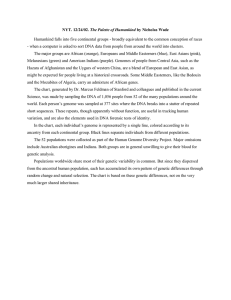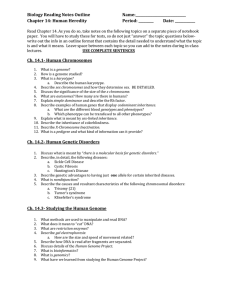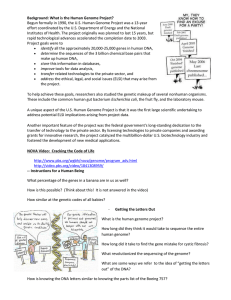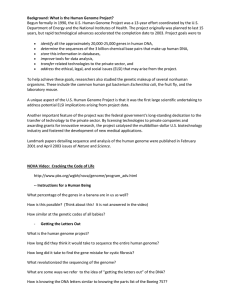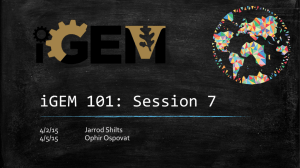Human Genome Project: Goals, Benefits & Ethical Implications
advertisement
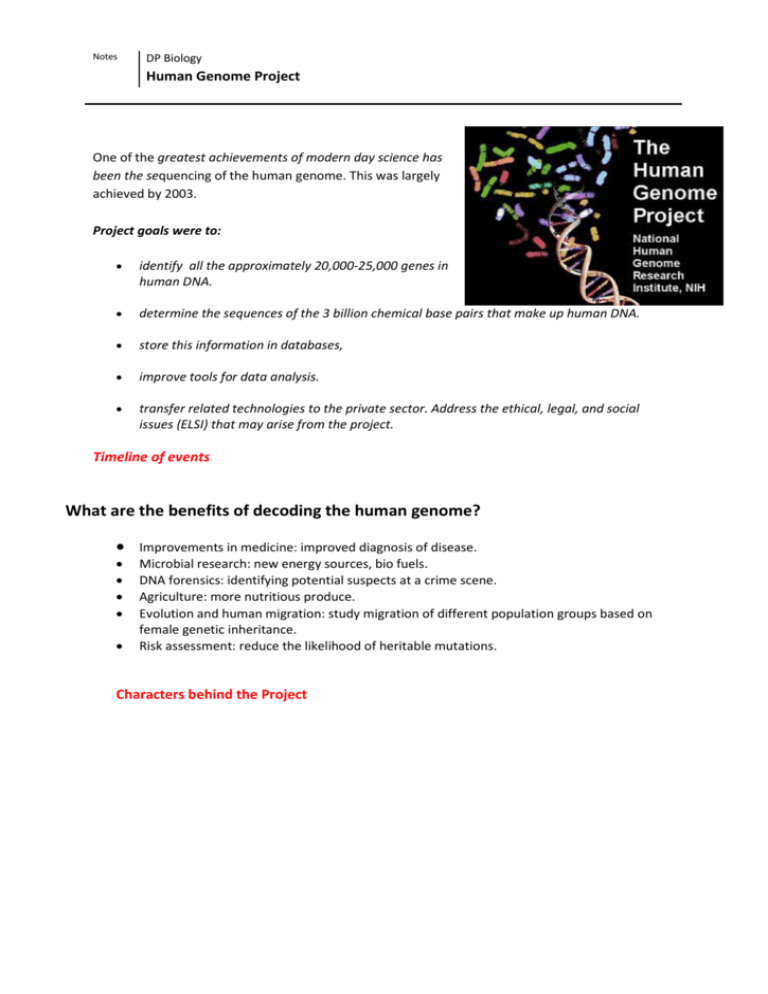
Notes DP Biology Human Genome Project One of the greatest achievements of modern day science has been the sequencing of the human genome. This was largely achieved by 2003. Project goals were to: identify all the approximately 20,000-25,000 genes in human DNA. determine the sequences of the 3 billion chemical base pairs that make up human DNA. store this information in databases, improve tools for data analysis. transfer related technologies to the private sector. Address the ethical, legal, and social issues (ELSI) that may arise from the project. Timeline of events What are the benefits of decoding the human genome? Improvements in medicine: improved diagnosis of disease. Microbial research: new energy sources, bio fuels. DNA forensics: identifying potential suspects at a crime scene. Agriculture: more nutritious produce. Evolution and human migration: study migration of different population groups based on female genetic inheritance. Risk assessment: reduce the likelihood of heritable mutations. Characters behind the Project Ethical, legal and social implications of the Human Genome Project fairness in the use of genetic information. privacy and confidentiality. psychological impact and stigmatization. genetic testing. reproductive issues. education, standards, and quality control. commercialization. conceptual and philosophical implications. Some implications of the human genome project Some questions to consider: - Fairness and privacy: who should have access to your genetic information? Psychological stigmatization: how does knowing your predisposition to disease affect an individual? Genetic testing: should screening be done when there is no treatment available? Some other issues: - Reproductive issues: use of genetic information in decision making. Clinical issues: implementation of standards and quality control measures in testing procedures. The sequencing was achieved through advances in DNA technology including the invention of the Polymerase Chain Reaction (PCR) and methods for making recombinant DNA (DNA containing sequences form more than one organism)

